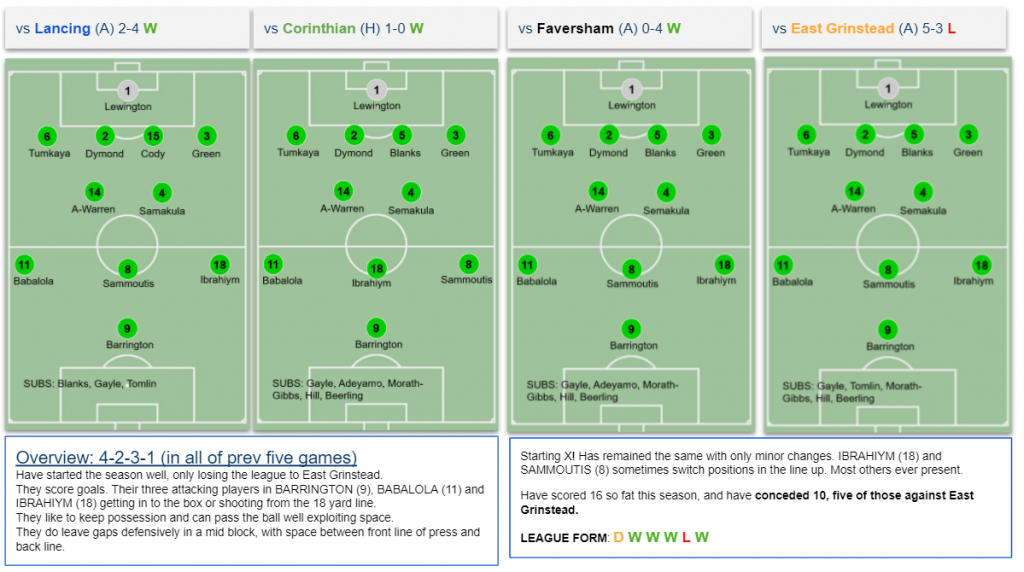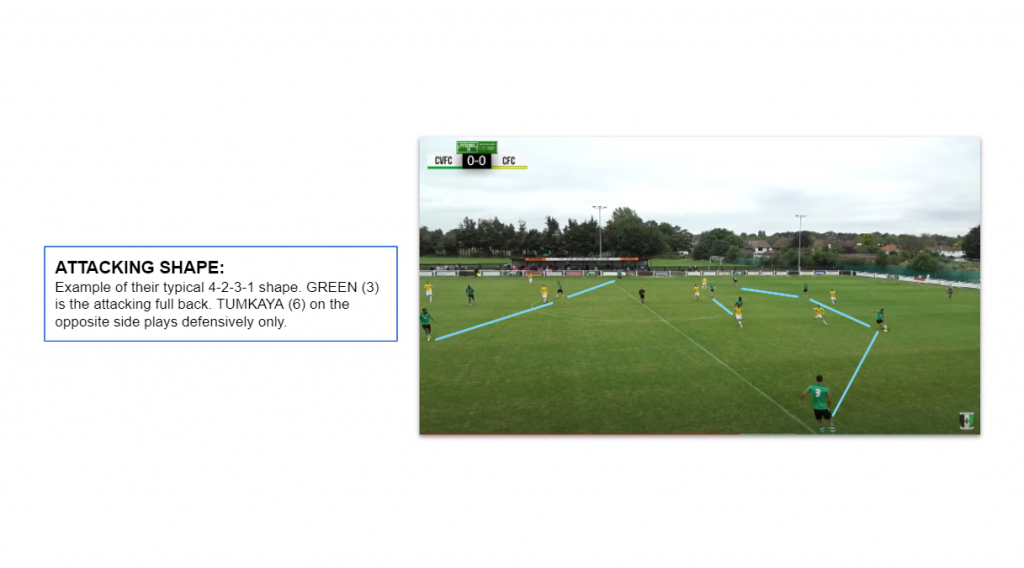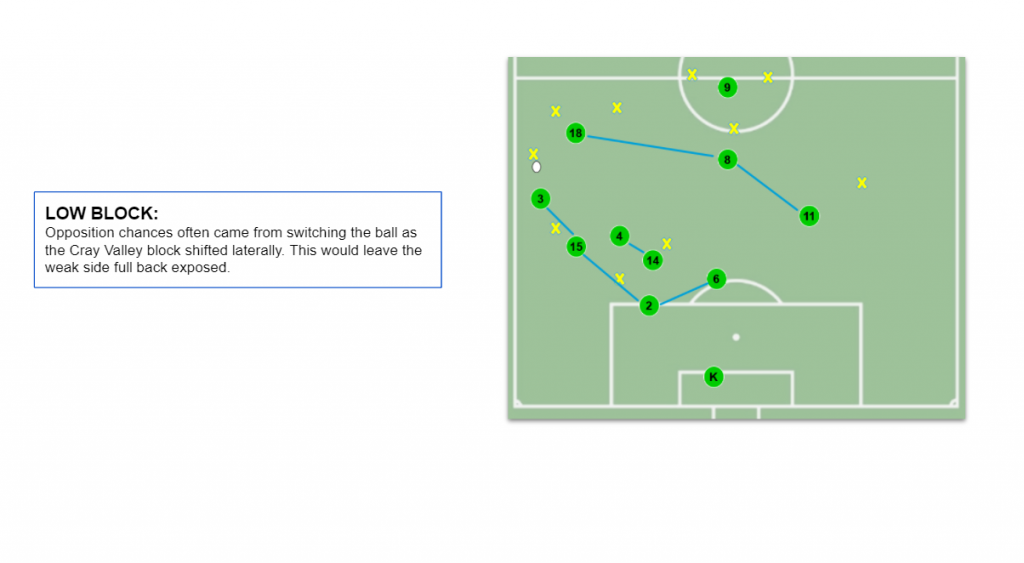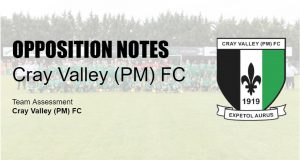How to use YouTube to dismantle, then destroy Cray Valley (PM)*
*In theory.
This wouldn’t be much of a scouting blog if it didn’t talk about actual scouting. So, with that in mind, here’s how to use YouTube to dismantle, then demolish Cray Valley (PM)*.
I’m writing this on Thursday ahead of our game against Cray Valley PM at home this weekend.
There’s no match to get to before they visit the Belmont, but never mind. When real experience is not forthcoming, turn instead to the internet like everyone else.
Not all teams produce videos, but Cray Valley does an excellent job with video production. It’s not ideal from a scouting point of view and won’t give you anything like a full picture. But it’s better than nothing.
So, if you’re ready to follow along at home, let’s get started.
First, I decided how far back to go. All the Cray Valley games are on YouTube so there’s plenty available. I settled on five. It seemed a shame not to make the most of them. I’ve linked to all the games below just in case you want to get properly involved.
I won’t go through everything in too much detail. But if you were to watch them all you’d get some first impressions. You might even create a page in your report that looked something like this.

Here’s what I’ve included.
Where to start
I start with the formation. Easy enough. It sometimes takes a few looks before you get this right because highlight clips jump from one moment to the next. But skipping back and forth helps get this nailed down.
Once you know the formation you can fill in the names. The images above are a pitch template copied into PowerPoint, with player icons layered on top. These can just be cut and pasted into the report.
The different colours are not essential but come in useful when you get to a tricky bit and want to procrastinate.

What you can’t be sure of is if there were any formation changes during the game. Maybe after goals are scored or conceded, or when a team is behind in the closing stages. But this is the shorter YouTube version of a report, so it’s a best guess.
I’ve referenced the main goal threats. In these five games, the goals came from the three forward players. I also pointed out where on the pitch they threatened most.
With the ball
To me, they looked like a team that wanted to get the ball into the half-spaces along the 18-yard line from where they could shoot (I put more details and images on this elsewhere in the report).
They also looked like a possession side. A pretty good one too. We can get some detail to back that up from the clips.
Start with this example against Faversham…
(All the following clips start at the relevant point. The passage of play described lasts for no more than about 20-30 seconds. So no need to watch the full clip.)
Impressive, but was it a one-off?
How about this clip against Three Bridges.
Then this one in the same game.
That’s three examples of good passing, creating space, and moving the ball forward. You might say in at least one of those their opposition sat back rather than pressed with any real effort. But we can be fairly sure Cray Valley pass the ball well and have the players to do that.
What about in defence?
The best we can do is look at how they set up and where their opposition caused them the most problems.
Generally, Cray Valley played tight defensively, but on a couple of occasions, they looked less so. Not all the time, but enough for us to pay attention.
Take this example.
It starts with a pass between the full back and centre back to draw in the winger Hassan Ibrahiym. That happens, but Ibrahiym recovers well, almost winning the ball on the back pass. East Grinstead manages to play the ball forward instead as the Cray Valley defensive midfielder Paul Semakula rushes to the halfway line.
East Grinstead play the ball behind him, along the touchline where the back four have shifted across. Again, they nearly recover the ball, but East Grinstead keeps possession and switch play, exploiting the gaps at the back, leading to a goal.
It’s not definitive (and there’s a floodlight failure part way through which might have taken players’ attention for a second) but it worked.
Here’s another example.
Here Three Bridges break lines quickly, with only Matthew A-Warren in front of the Cray defence looking alert. On this occasion though it comes to nothing.
The next example is from the same game.
Once Three Bridges get past the initial first line of defence, they have plenty of space between them and the Cray back line, which has dropped deep. Too deep? Have a look.
Another example, with Cray Valley 3-0 up and taking their eye off the ball, figuratively at least.
Here there’s no urgency in the first line of defence, which allows Three Bridges to play long behind the full back and into space before a quick cross into the box leads to a goal.
Watch how they play five passes, then take a shot, without a single Three Bridges player being pressed or challenged on the ball.
So that’s three examples from two of those games.
But that still leaves a lot of guesswork. Every team slips up from time to time. Ideally, you want to spot patterns with more examples and there’s often more detail than you might see on first look.
Final third
You can see who’s scoring goals on any results website. But we’re looking for the detail that tells us more about where they want to put the ball when attacking.
Go back to the clips and keep track of the shots on goal and who makes them.
Here images are taken from the clips that show examples.




You get the idea. You can’t be sure that they set out to always shoot from here, but you at least know they’re dangerous in these areas.
What else can you include?
From there you can elaborate on whatever else you spotted in the report. How they attack, how they defend, and any patterns on set pieces.


Transitions are a little harder from clips like this. You might get to see counter-attacks, but again with highlights, they’re only isolated examples.
Set pieces
That leaves those set pieces, which luckily for us usually make the cut in the video editing room.
A lot goes into this, and the detail gets into deep levels of proper obsession. But the result might be images like this one below. They give some advance warning, especially useful against Cray Valley who are ruthless with set pieces. As we’ve seen in the videos, they’ve scored four goals from set pieces in five games.

So that’s a bit of detail that elaborates on the initial cover page showing the line-ups with a few notes.
That would make up the bones of a short report based on YouTube clips. Nothing comprehensive but enough insight to pass on. At the very least enough to make a manager aware of roughly what to expect when facing Cray Valley PM. They’re a properly good team, with some great players, who’ll challenge all the way.
We’ll find out the result on Saturday.
